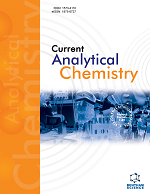
Full text loading...
Long COVID, also known as post-COVID-19 syndrome (PCS), is a condition where individuals continue to experience symptoms for weeks or months after recovering from COVID-19. The aim of this study was to evaluate the long-term effects of severe COVID-19 on promotor methylation and expression genes including CCR5, CCR6, CCR9 and CCL3 in children.
Clinical data and blood samples from 94 long COVID patients and 25 healthy subjects were collected. The control group was age-matched. Promotor methylation and mRNA expression of CCR5, CCR6, CCR9 and CCL3 genes in these patients and control group were assessed through methylation-specific PCR and Real-time PCR assay.
Our result indicated that promotor of CCR5 (p = 0.01) and CCL3 (p = 0.006) in long COVID children were hyper-methylated compared to healthy control group. Subsequently CCR5 and CCL3 transcript was decreased compared to control group (p = 0.01). In addition, CCL3 transcript in children with long COVID was decreased compared to control group (p = 0.008). On the other hand, we did not observe any significant modification in the transcript levels of CCR6 (p = 0.7) and CCR9 (p = 0.46) in children with long COVID in comparison to all control groups.
The CCR5 and CCL3 promoter region DNA methylation and the subsequent decrease in the expression of these genes were possibly correlated with long COVID occurrence in children. Our study revealed additional data on the SARS-CoV-2 mediated inflammatory response.

Article metrics loading...

Full text loading...
References


Data & Media loading...

